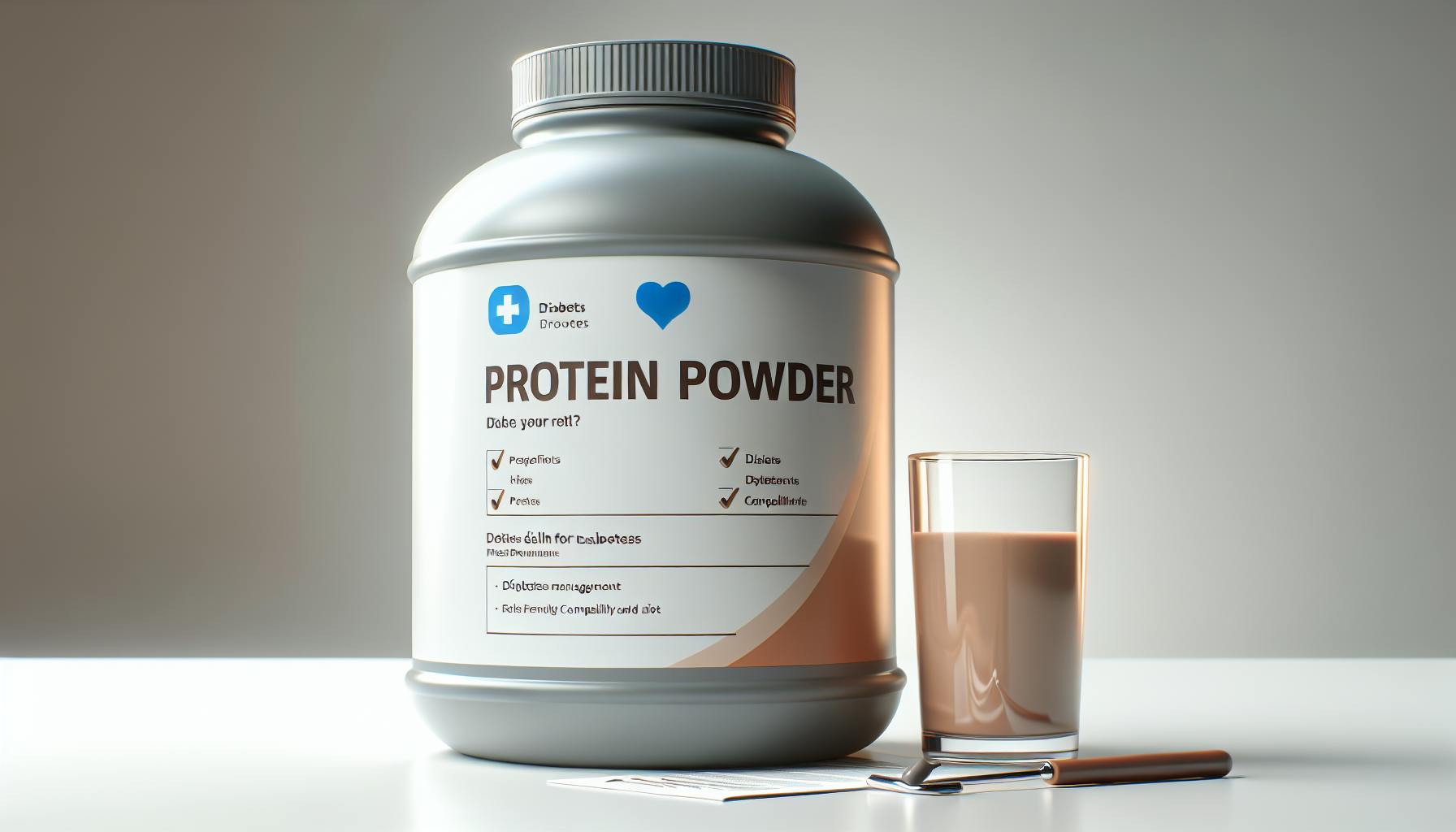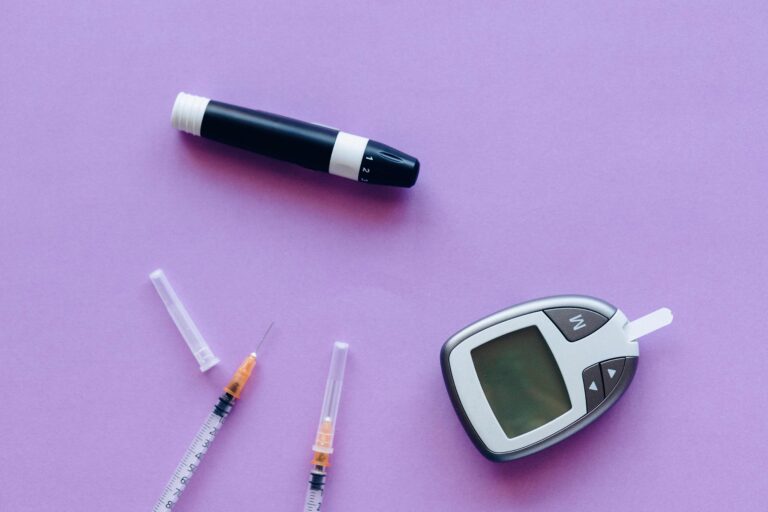Empower Your Diabetes Journey with Protein Powder
Discover the best protein powder for diabetes management. Boost your journey with our friendly guide to staying healthy!
Picking Your Perfect Protein Powder
Finding a protein powder that plays nice with diabetes management isn’t just about crossing your fingers and hoping for the best. You gotta know what to look for so it helps you meet those fitness and health goals. We’re gonna dig into the nitty-gritty of picking protein powders and steer clear of ones that sneak in what you don’t need.
Protein Selection Tips
When we’re in the market for protein powder to help manage diabetes, top priority is the type and quality of the protein. We’ve got some heavy hitters like whey, casein, soy, and the plant-based gang. Here’s a down-low on each:
| Protein Type | What It Brings to the Table |
|---|---|
| Whey Protein | Quick and easy on the belly, great for muscle building, might help keep blood sugar in check. (NCBI) |
| Casein Protein | Slow and steady with amino acids so you’re covered longer |
| Soy Protein | All-essential amino acids in one plant-based package |
| Plant-Based Protein | Perfect for vegans; check out pea, hemp, or rice proteins |
If you’re tackling diabetes, whey protein can be quite the buddy. It can help manage insulin levels by slowing down how fast food leaves the stomach and jacking up the right hormones, keeping sugar spikes in check (Source). And hey, if you’re down with the plant-based life, that’s a solid choice too. Dive into our write-up on plant-based protein powder for diabetics for more info.
Dodging Sugary Extras and Nasty Chemicals
With diabetes, it’s all about playing defense against powders hiding too much sugar or funny chemicals. Some pre-made shakes sneak in 30 grams of sugar (Medical News Today). Use powders to take control of what’s going into your blend and watch out for those sugar bombs.
Smart picks for diabetes-friendly protein powder:
- Read the label religion: Aim for short, sweet ingredient lists without added junk.
- Resist sugary temptations: Steer clear of sweeteners like sugar or different syrups to dodge sugar jumps.
- Natural is usually better: Opt for protein with natural flavors and just the necessary extras.
| Ingredient to Avoid | Why to Skip It |
|---|---|
| Added Sugars (dextrose, glucose) | They skyrocket blood sugar levels |
| Artificial Sweeteners (aspartame, sucralose) | Could have bad health vibes |
| Fake Flavors and Colors | Usually means too processed |
By sticking to these tips, our choice in protein powder should be a win for diabetes management. To get more info on smart shake options, have a look at our piece on diabetic-friendly protein shakes.
Keep this in mind: the best protein kick for diabetic folks should blend nutrition, taste, and a good-for-you profile. For more scoop on top picks, check our in-depth look at best protein powder for diabetics.
Protein Shakes for Diabetes Management
Protein shakes are like the handy little sidekick in our diabetes battle plan. So, let’s chat about why they’re awesome and how to sprinkle protein goodness across our day.
Benefits of Protein Shakes
These tasty drinks can be our secret weapon for keeping diabetes in check. Let’s break it down:
- Blood Sugar Control: Hey, science folks say loading up with more protein can keep our blood sugar from bouncing around like a pogo stick. A nifty study even showed folks munching more protein had lower sugar spikes post-grub (MNT).
- Feeling Full: Protein sticks around in your belly longer than those quick-dissolve carbs, making us feel full. This can help with the waistline, a biggie for managing diabetes (MNT).
- Blood Pressure: Got a thing for whey? It’s the stuff in many protein shakes and has shown to mellow out high blood pressure, which is great news for those carrying extra pounds (NCBI).
To soak up all these perks, we gotta pick wisely. Check out the best protein powder for diabetics, steering clear of sugary and chemical-laden stuff. For a list of options, check out our diabetic-friendly protein shakes guide.
Protein Distribution throughout the Day
Spreading out that protein love throughout the day helps keep our energy steady and our blood sugar chill. The American Diabetes Association recommends about 15-20 grams of protein at each mealtime. Here’s a way you might do it:
| Meal | Protein Power-Up | Protein (g) |
|---|---|---|
| Breakfast | Protein Shake | 20 |
| Mid-Morning Munch | Greek Yogurt | 15 |
| Lunch | Grilled Chicken Salad | 20 |
| Snack Attack | Nuts and Seeds Mix | 15 |
| Evening Feast | Baked Salmon | 25 |
This mix-and-match keeps our sugar from spiking and helps us pack in nutritious bites from all kinds of foods.
While adding shakes, don’t bet everything on them. It’s crucial to mix things up—think plant-based protein powders and other nutrient-rich options. Peek at what protein supplement suits diabetes best for overall wellness.
Want tips for blending the perfect shake or advice on when to sip? Head to our diabetes-friendly protein shake tips for the scoop.
Impact of Whey Protein Powder on Diabetes Management
We all know whey protein’s a big hit among the fitness crowd, but did ya know it’s a nifty helper for folks with diabetes too? Let’s see why whey protein might be your next best friend when you’re keeping an eye on those insulin levels.
Whey Protein Benefits
Whey protein packs a powerful punch with a heap of branched-chain amino acids. Think of it as the Usain Bolt of proteins — fast and efficient. It gets absorbed quicker and gives your muscles a nice energy burst, along with a swift kick to those insulin levels. Instant power plus smart sugar control, not a bad deal, huh?
Here’s how it helps anyone with diabetes:
- Enhanced Insulin Handling: Even when you’re having a lil’, whey gets that insulin working overtime and manages the blood sugar like a pro.
- Lower Blood Sugar After Meals: Slows the stomach down a bit and churns out some good hormones to keep sugar levels in check after munching.
- Taming the Hunger Monster: Keeps those snack attacks in check, helping with weight when it’s playing mind games with your sugar levels.
Whey Protein and Insulin Regulation
Whey protein’s got some pretty clever moves up its sleeve for insulin control. Let’s dive into what makes it tick:
- Boosting Insulin Activity: Those branched-chain amino acids in whey — yep, they get that insulin buzzing, helping glucose shuffle into cells like they’re on a mission (NCBI).
- Taming That Sugar Surge Post-Meal: Keeps things chill in the stomach and turns up the good-hormone-meter to dodge the sugar rush after eatin’.
- Sticking Around for Longer: It might just put the brakes on enzymes that mess with incretins, giving insulin a little more hang time to do its thing (NCBI).
| How It Works | Benefits |
|---|---|
| More Insulin Output | Cells get their sugar fix efficiently |
| Slowmo Stomach Emptying | Keeps scary sugar spikes at bay post-eating |
| More Happy Hormones | Gives those good guys a longer lifeline |
| Appetite Control | Helps manage that waistline too |
For those of us living with diabetes, adding a bit of whey protein could be a smart move for smoother blood sugar sailin’. Check out the best protein powder for diabetics for some solid picks. Thirsty for more know-how? Dive into our reads on diabetic-friendly protein shakes, plant-based protein powder for diabetics, and protein supplement for diabetic patients.
Promoting Muscle Health with Protein
Hey there! Keeping our muscles in tip-top shape is super important, especially for all of us wrestling with diabetes day in and day out. Believe it or not, protein is like the ultimate sidekick for muscle growth and upkeep.
Importance of Protein for Muscle
Now, let’s talk about why protein is the real MVP for our muscles. It’s the building block our muscles need to patch up worn-out tissues and build some fresh ones. And guess what? Folks dealing with diabetes tend to lose muscle quicker, so it’s a no-brainer that we ought to be all ears about how much protein is on our plates. Chowing down on good-quality protein from a bunch of different eats is how we keep those muscles sturdy and fit. And remember, if our muscles are in good spirits, it’s easier to keep diabetes in check. Looking for the best protein powder for diabetics? Mixing up our protein sources does the trick!
Recommended Daily Protein Intake
Getting down to the nitty-gritty, how much protein should we actually munch on? For anyone with diabetes, you want to aim for at least 0.8 grams per kilogram of body weight every day. That’s roughly about 10% – 35% of your calories in a day coming straight from protein. For example, if you’re tipping the scales at 150 pounds (that’s roughly 68 kilos), you’re looking at needing about 55 grams of protein daily.
Check out this handy chart for a little help with protein powder for diabetes management:
| Body Weight (lbs) | Body Weight (kg) | Minimum Protein Intake (g/day) |
|---|---|---|
| 120 | 54.4 | 44 |
| 150 | 68.0 | 55 |
| 180 | 81.6 | 65 |
| 200 | 90.7 | 73 |
Don’t forget to spread that protein love throughout your day. We’re talking about having protein-packed meals and snacks on the regular, so our muscles have what they need to grow stronger. Plus, protein’s tough to digest, which means we stay full longer and can even help with shedding a few pounds. But hey, going overboard with protein, especially from high-calorie picks like red meat, may have us getting those extra pounds (Diabetes Food Hub, DarioHealth).
Want more ways to sneak protein into your meals? Swing by our pages on diabetic-friendly protein shakes and protein supplement for diabetic patients. Keeping our muscles flexed and healthy is a big deal on our diabetes ride.








Leave a Reply